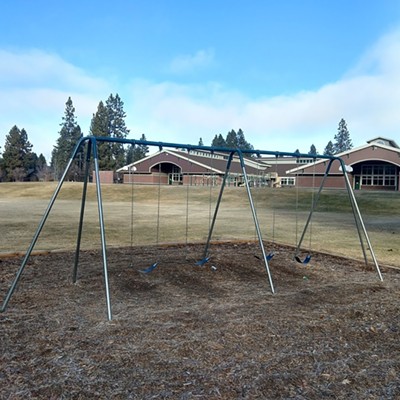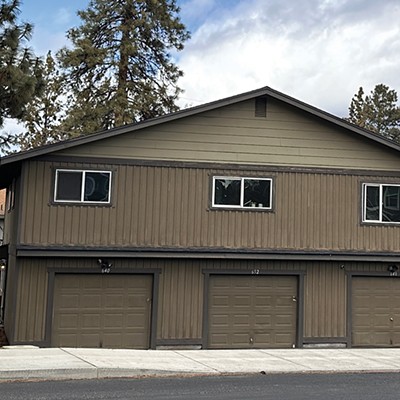About a month ago, Oregon State University president Edward Ray stopped by the Source offices. He was between visiting the proposed 10-acre site for the new Cascades campus and delivering his State of the University speech. Ray was animated about the reasons for and virtues of a four-year campus in Bend, which is currently in limbo as OSU waits to see if the state's Land Use Board of Appeals upholds City Council's approval of its site plan. Ray gave the expected arguments about the campus, but he also mentioned one argument that we're surprised we haven't heard more discussion about: That a four-year college will help stop the brain drain from Central Oregon.
Without a four-year university within a two-hour radius, Ray pointed out, students often travel over the Cascades to attend school in Portland, Corvallis, or Eugene.
Nationally, there are some pretty clear trends for what students do after graduating from high school: On average, about three-quarters of students stay within their home state for their college or university education. Although it should also be pointed out that location is not the primary motivator for many of the top graduating high school students; according to the Oregon State Board of Higher Education, more than two-thirds of Oregon high school students with a B-plus average or better leave the state for their college or university education.
But those numbers do not necessarily apply to Central Oregon, where 100 percent of students looking for a four-year university education must leave the area—and the immediate social consequences and long-term impacts to the intellectual base and supply line for the job force are immense.
Probably the closest analogy to OSU-Cascades' proposed four-year campus is Southern Oregon University, a largely regional institution. It is smaller than the three biggest state schools—University of Oregon, Oregon State and Portland State—but is roughly the same size (6,000 students) that OSU-Cascades plans to become (5,000 by 2025).
What is interesting to note is that in the late 1950s SOU was scheduled to close when the Oregon state legislature allegedly dispatched Elmo Stevenson as the university's president to close down the campus. However, according to lore, he was so smitten with the region and the faculty that he vigorously—and successfully—lobbied for its facilities to remain open.
That "what if" moment should be a curious contemplation for Central Oregonians. What if SOU had been closed in the 1950s? There are currently 6,000 students attending the campus—almost 50 percent from the immediate vicinity of Jackson County, where Ashland is located; add the adjacent counties and that is another 10 percent of the student population. Heck, even their football team, which last fall won a national title in their division, is largely fielded from players within 150 miles from the campus. Had the college closed in the 1950s, all of those students would have been forced to travel outside the region to pursue a four-year public education.
With graduation next week, it is an important moment to consider that Bend could enjoy the same retention of students. If the numbers for OSU-Cascades are comparable to SOU, then hundreds of current graduates from the Bend-La Pine School District who will travel next fall to Eugene, Corvallis, or Portland would stay here—and eventually be more likely to start their careers in Bend.
What if?


























